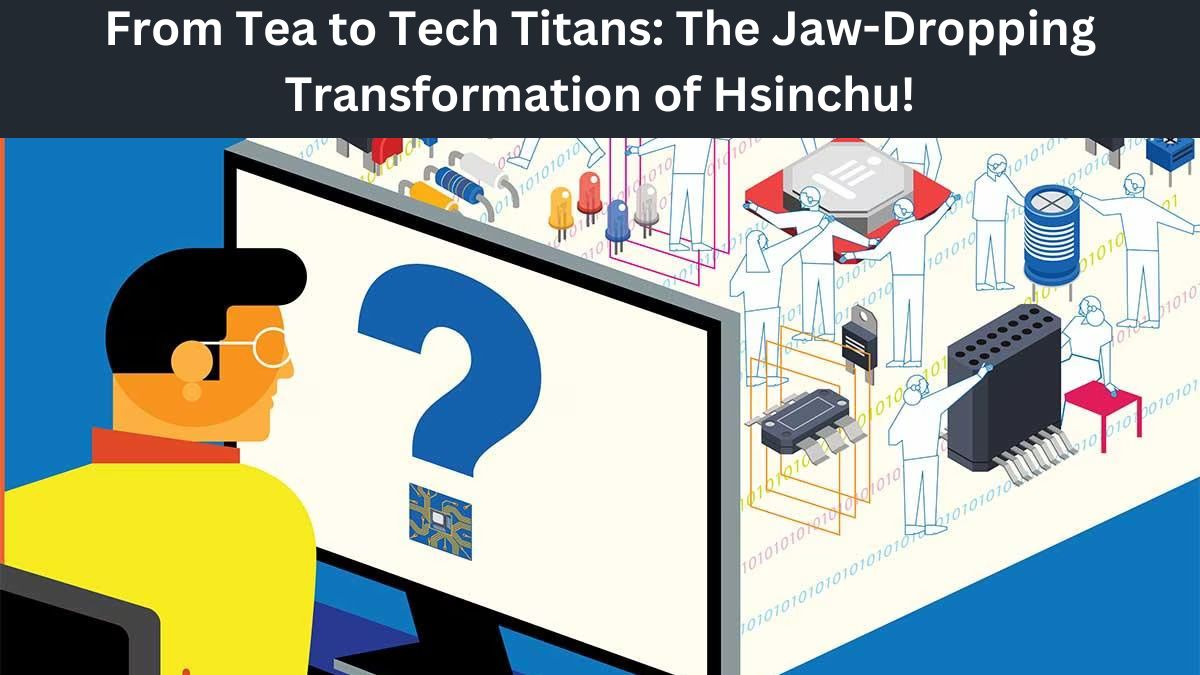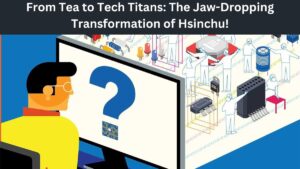The Transformative Tale of Hsinchu and India’s Semiconductor Aspirations 2024

Introduction:
In the annals of economic transformation, few stories rival the remarkable journey of Hsinchu, a small city in Taiwan that has emerged as a global powerhouse in chipmaking. Once known for its tea farms and infamous for its serpentine inhabitants, Hsinchu now stands as a beacon of innovation and technological prowess. Situated approximately 80 kilometers from Taiwan’s bustling capital, Hsinchu’s evolution from agrarian roots to semiconductor stronghold offers valuable lessons for regions aspiring to replicate its success. As India sets its sights on establishing its own semiconductor hub in Dholera, Gujarat, the parallels between these two regions present an intriguing narrative of transformation, resilience, and the relentless pursuit of progress.
Chapter 1: The Genesis of Hsinchu’s Transformation
Hsinchu’s journey towards becoming a global hub of semiconductor manufacturing can be traced back to the early 1980s when Taiwan embarked on a concerted effort to transition its economy from agriculture to technology-driven industries. At the heart of this transformation was the establishment of the Hsinchu Science Park, a sprawling complex dedicated to research, development, and innovation. Bolstered by government support and strategic investments, the Science Park quickly became a magnet for talent and capital, laying the groundwork for Hsinchu’s ascent as a semiconductor powerhouse.
Chapter 2: The Ecosystem of Innovation
Central to Hsinchu’s success is its vibrant ecosystem of innovation, characterized by close collaboration between academia, industry, and government. Academic institutions such as the National Tsing Hua University and National Chiao Tung University play a pivotal role in nurturing talent and conducting cutting-edge research. Meanwhile, government agencies provide crucial support in the form of funding, infrastructure, and policy incentives to spur innovation and entrepreneurship. This synergistic relationship has created a fertile environment for the rapid advancement of semiconductor technology in Hsinchu.
Chapter 3: The Role of Entrepreneurship and Risk-Taking
At the heart of Hsinchu’s entrepreneurial ecosystem is a culture that celebrates risk-taking, experimentation, and resilience. From small startups to multinational corporations, companies in Hsinchu embrace innovation as a driving force behind their success. The city’s supportive infrastructure, including incubators, accelerators, and venture capital firms, provides a nurturing environment for aspiring entrepreneurs to transform ideas into reality. Moreover, Hsinchu’s proximity to major markets in Asia and its robust intellectual property protections have further fueled its entrepreneurial spirit, attracting talent and investment from around the world.
Chapter 4: Infrastructure and Connectivity
Critical to Hsinchu’s emergence as a semiconductor hub is its world-class infrastructure and connectivity. The city boasts state-of-the-art research facilities, manufacturing plants, and logistics networks that facilitate the seamless flow of goods and information. Additionally, Hsinchu’s strategic location near major ports and airports enables efficient access to global markets, making it an ideal destination for semiconductor companies seeking to expand their operations. Investment in infrastructure, including transportation, telecommunications, and utilities, has been instrumental in supporting Hsinchu’s rapid growth and development.
Chapter 5: Policy Support and Government Initiatives
Government support has played a pivotal role in Hsinchu’s transformation into a semiconductor powerhouse. From tax incentives to research grants, policymakers have implemented a range of initiatives to attract investment, foster innovation, and create a conducive business environment. Key agencies such as the Ministry of Science and Technology and the Industrial Technology Research Institute have been instrumental in driving forward-looking policies that prioritize R&D, talent development, and industry collaboration. Furthermore, strategic partnerships with leading international organizations and governments have enhanced Hsinchu’s global competitiveness and reputation as a center of excellence in semiconductor manufacturing.
Chapter 6: Challenges and Opportunities
Despite its remarkable success, Hsinchu faces a myriad of challenges as it navigates an increasingly complex global landscape. Rising labor costs, intensifying competition, and geopolitical tensions pose significant risks to the city’s long-term sustainability and growth. Moreover, the rapid pace of technological innovation requires continuous adaptation and investment to remain at the forefront of the semiconductor industry. However, amidst these challenges lie ample opportunities for Hsinchu to diversify its economy, expand into new markets, and pioneer emerging technologies such as artificial intelligence, internet of things, and green energy.
Chapter 7: Lessons for Dholera and India’s Semiconductor Ambitions
As India embarks on its own quest for semiconductor self-sufficiency, the story of Hsinchu offers valuable insights and lessons for policymakers, industry leaders, and entrepreneurs. Firstly, Dholera must prioritize the development of a robust ecosystem of innovation that fosters collaboration between academia, industry, and government. Investing in research infrastructure, talent development, and intellectual property protection will be critical to nurturing a thriving semiconductor ecosystem in India. Secondly, Dholera can learn from Hsinchu’s experience in leveraging strategic partnerships and global networks to enhance its competitiveness and attract investment. By forging alliances with leading international organizations and fostering collaboration with foreign governments, Dholera can accelerate its development as a semiconductor hub.
Conclusion:
The journey of Hsinchu from tea farms to chip dreams serves as a testament to the transformative power of vision, collaboration, and perseverance. As India embarks on its own semiconductor aspirations with the proposed chip city of Dholera, it must draw inspiration from Hsinchu’s success and chart a course towards sustainable growth and innovation. By investing in infrastructure, fostering entrepreneurship, and implementing forward-looking policies, Dholera has the potential to realize India’s chip dreams and emerge as a global leader in semiconductor manufacturing. As the world enters an era defined by technological disruption and innovation, the lessons of Hsinchu offer a roadmap for regions seeking to embrace the opportunities of the digital age and secure their place in the global economy.






